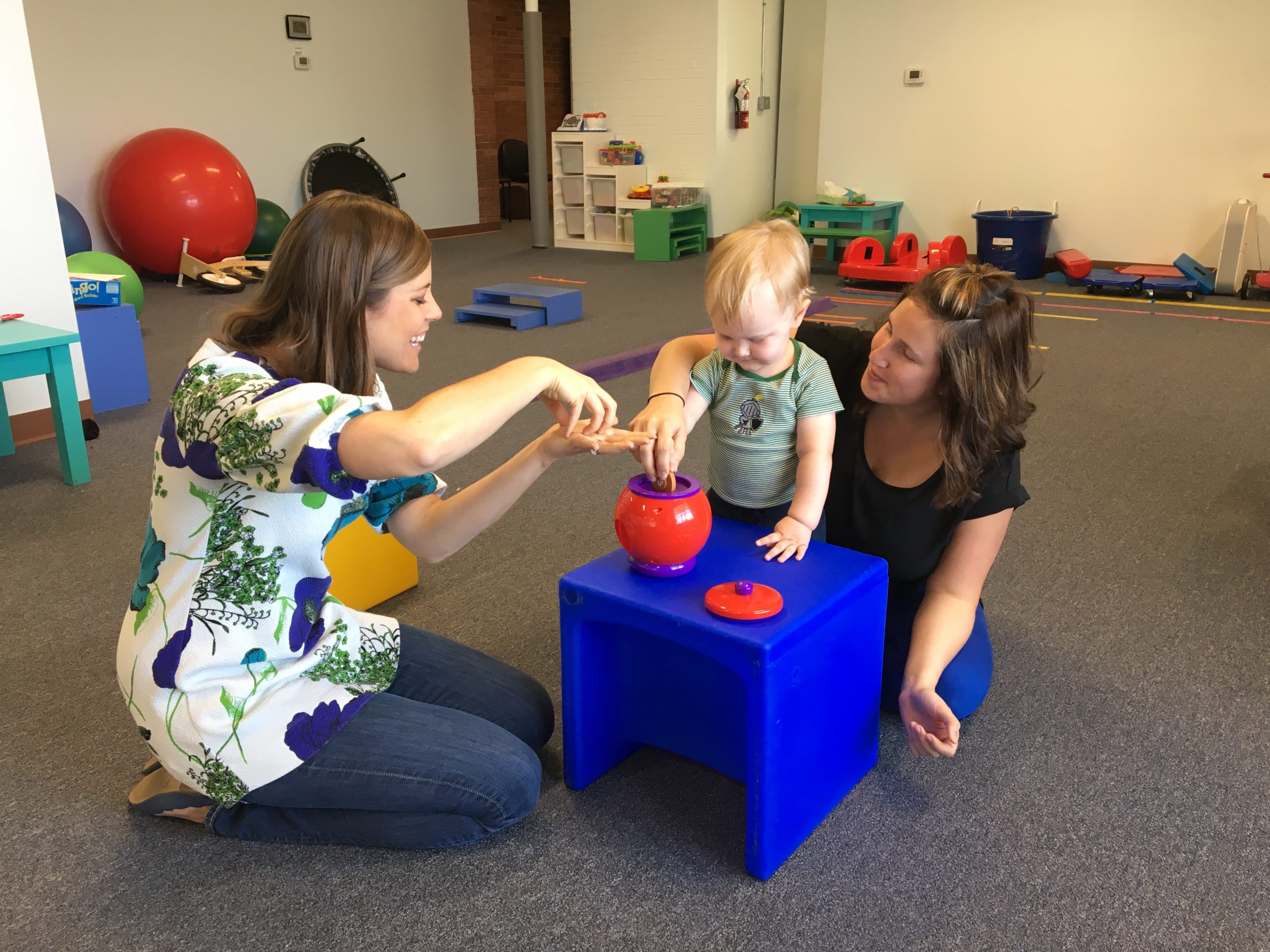The Benefits of Co-Treating
By Amanda Bruce, MS, OTR/L and Stacy Taylor, MS, CCC-SLP
Kids Place Pediatric Therapists
Many parents new to pediatric therapy are unfamiliar with the term “co-treat.” Short for co-treatment, this refers to two different therapy disciplines working with one child at the same time. For example, your child may receive treatment from their occupational and speech therapist, or their occupational and physical therapist, within one session.
Generally, the more time spent in therapy the better. While we prefer separate sessions for separate disciplines, and co-treating is not always appropriate to meet your child’s needs, there are many benefits to co-treats to be considered. For example, during a co-treat:
- Occupational therapists can assist in meeting sensory needs, allowing your child to better attend to communication/articulation or gross motor tasks.
- Language can be targeted in more functional and varied settings and activities.
- Many children are more verbal when movement is implemented into therapy sessions.
- Children are often more engaged when movement activities are paired with speech and language activities.
- Therapists receive increased support for children with multiple needs (positioning or behavioral needs).
- Physical and occupational therapists address core stability which ultimately affects distal and oral motor mobility.
- As motor planning improves with gross and fine motor skills, improvement in the oral motor structure is typically observed.
- Behavior management can be addressed while also working toward functional goals when more than one therapist is present.
- Parents can be more easily informed and educated as the session progresses when two therapists are available.
- Our philosophy is whole child focused, and when multiple therapists are working with a child they are able to address different systems and needs at the same time.
- Less time spent at clinic while still receiving all services.
- Different disciplines have different approaches or training, and when therapists problem solve together, they are able to determine more effective and efficient approaches for the child.
All of these statements support the overall theme that different disciplines complement each another. So if the term is mentioned, you now will be able to make a more educated decision about whether co-treating may work well for your child.







